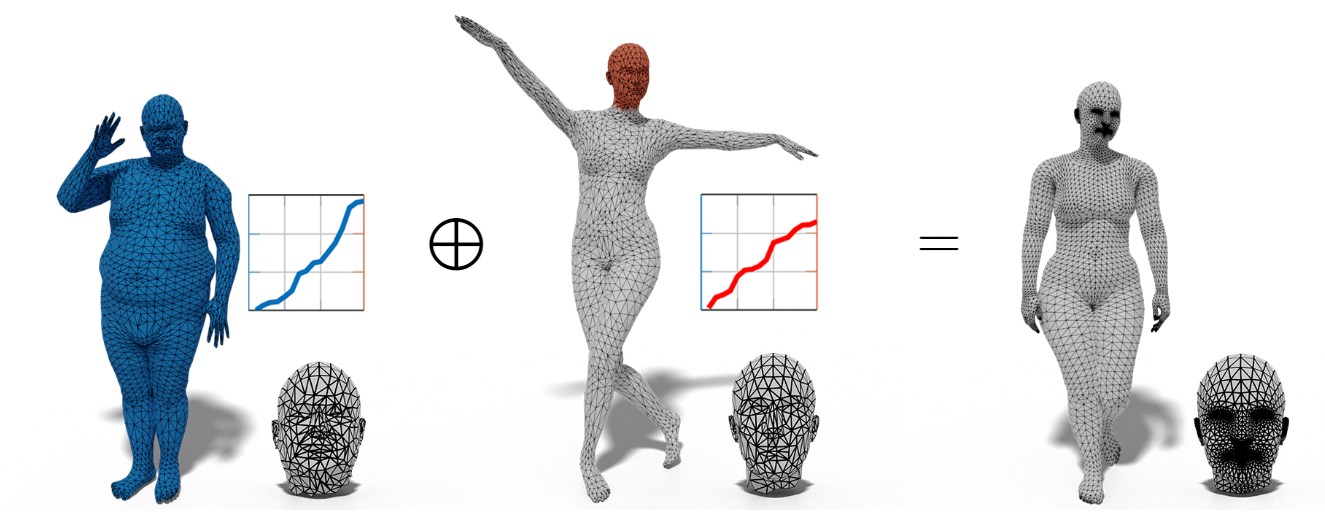Localized Shape Modelling with Global Coherence: An Inverse Spectral Approach
Many natural shapes have most of their characterizing features concentrated over a few regions in space. For example, humans and animals have distinctive head shapes, while inorganic objects like chairs and airplanes are made of well-localized functional parts with specific geometric features. Often, these features are strongly correlated -- a modification of facial traits in a quadruped should induce changes to the body structure. However, in shape modelling applications, these types of edits are among the hardest ones; they require high precision, but also a global awareness of the entire shape. Even in the deep learning era, obtaining manipulable representations that satisfy such requirements is an open problem posing significant constraints. In this work, we address this problem by defining a data-driven model upon a family of linear operators (variants of the mesh Laplacian), whose spectra capture global and local geometric properties of the shape at hand. Modifications to these spectra are translated to semantically valid deformations of the corresponding surface. By explicitly decoupling the global from the local surface features, our pipeline allows to perform local edits while simultaneously maintaining a global stylistic coherence. We empirically demonstrate how our learning-based model generalizes to shape representations not seen at training time, and we systematically analyze different choices of local operators over diverse shape categories.
PDF Abstract

 SURREAL
SURREAL